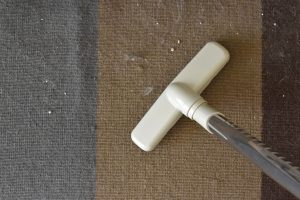So you're ready to switch to natural pine pellets. But maybe you're worried about your cat rebelling when you try to change to a different litter? Never fear! We've researched articles and information from top experts to make this switch easy for you and your cat in this post. We've also included some tips and tricks for an easy transition in different situations. Here is the easiest way to switch from clay litter to pine.
- Thoroughly scrub all boxes clean each day.
- Days 1 and 2: Add one inch of pine pellets, and two inches of your normal clay; do not mix.
- Days 3 and 4: Add two inches of pine pellets, and one inch of your normal clay; do not mix.
- Day 5: If your cat is still using the litter box normally, empty, thoroughly clean, and fill all boxes with two to three inches of pine pellets.
So does this mean that your cat will have no problems with the change? Not always, some circumstances need more patience, such as older cats, multi-cat households, or extremely finicky cats. Continue reading to find out the tips and tricks to help your cat love the upgrade from clay litter to pine!
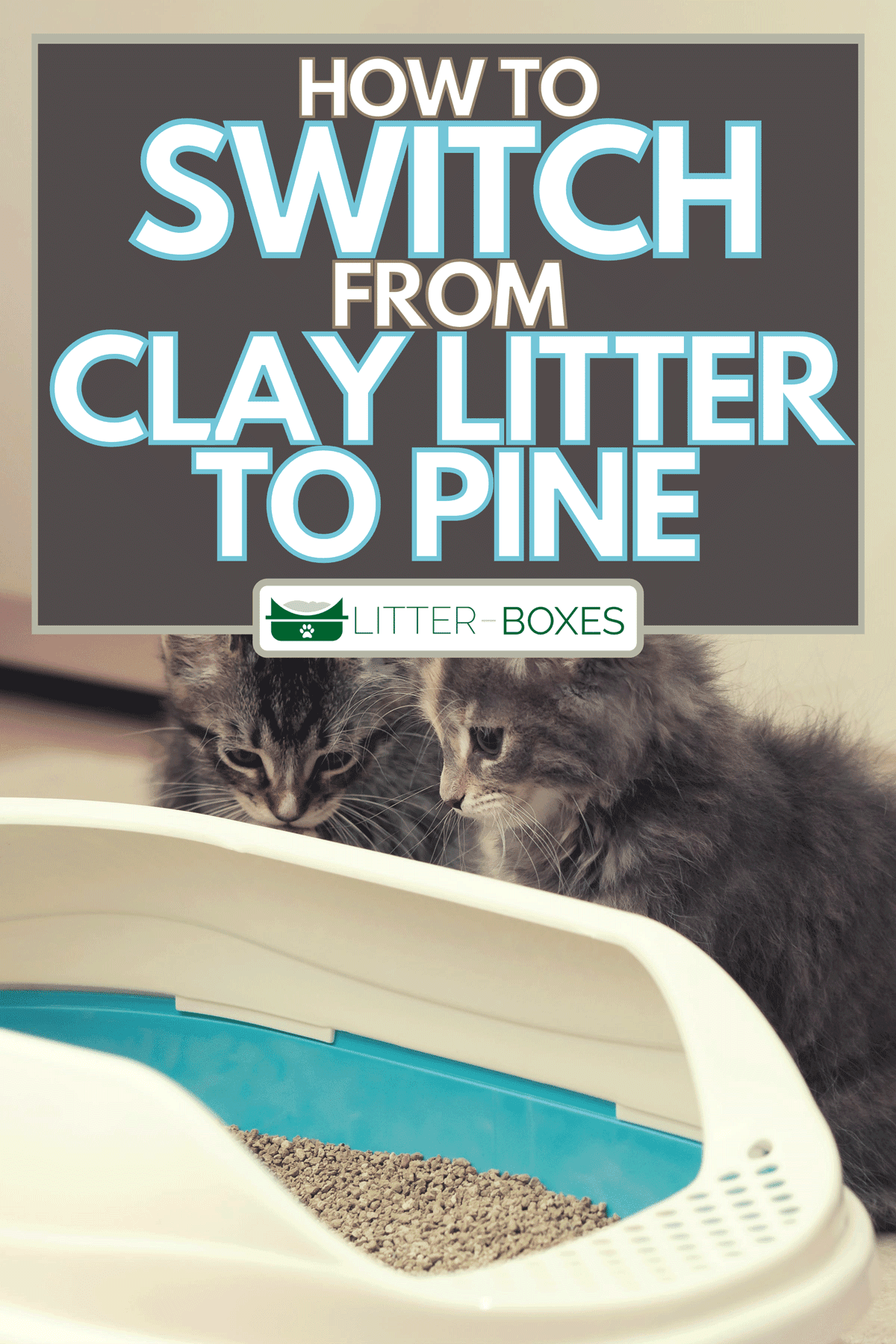
Start Fresh
The first thing you need to understand to make the switch is that cats want a clean toilet, just like we do. You want a successful change of litter, with no accidents. So think of all the things your cat requires.
Cleanliness is next to Catliness
Above all, cats are extremely clean creatures with an acute sense of smell. They do not want to do their business while standing in strong, chemically perfumed litter. They also do not want to stand in a box smelling of urine and feces. Make sure their box is fresh and clean, and they will love their new litter.
Scrub
For the transition, start with totally new boxes. At the very least, scrub all of your current boxes with soap and hot water. Then soak them for 30 minutes in a 10% bleach water solution. Rinse them several times, dry, and allow them to stand for 30 minutes to let any remaining bleach smell evaporate.
Clean
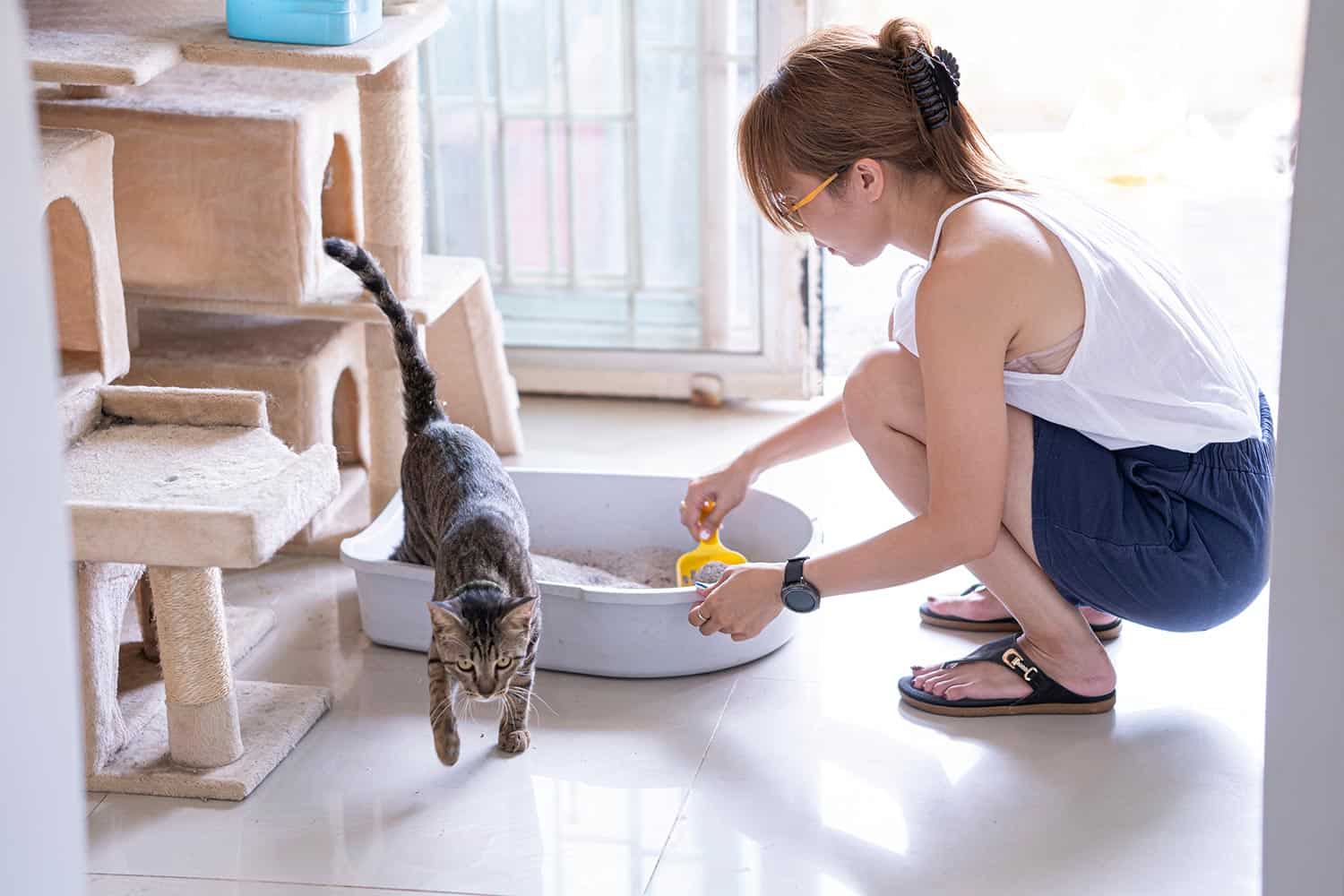
Keep the boxes scrupulously clean during the transition. This is crucial. Remove solid waste ASAP. Luckily, most brands of pine pellets are flushable; check the label before flushing. Just take a little toilet paper, lift the solid waste, and flush it. Don't flush too much at once!
Problems
If you already have issues getting your cat to use the litter box consistently, don't assume a change of litter will solve the problem. If you have ruled out a health problem, then the issue is usually one of the following:
- Cat does not feel safe with litter box location. Solution: Put several boxes around the house. Keep the ones that the cat likes and uses.
- The litter box is not clean enough for your cat. Solution: Clean it several times daily. Find ways to make cleaning easier, such as the new pine-pellet sifting boxes.
- Not enough litter boxes. Solution: Always have one more box than the number of cats. Cats like to urinate and defecate in different places. You may need extra boxes to accommodate multiple cats.
- Cat is being chased or frightened away from the litter box. Solution: Keep litter boxes inaccessible to dogs. They could be bothering your cat when he goes to the toilet because - bleh - dogs like to eat cat poo.
This little dishpan is an excellent litter box to squeeze next to the toilet for easy cleaning.
Sifting Pans specially made for Pine litter make cleaning easy!
How Do You Transition From Clay Litter To Pine Pellets?
To transition from clay to pine, use the bulleted list above. The most important thing to remember is to allow your cat extra time if they are not taking easily to the litter change. Bad past experiences may mean your kitty needs some extra time and attention.
Be patient, and be sure to keep the boxes clean and appealing. A simple solution to keep at least one box super clean is keeping a small one next to the toilet with only enough pine litter to cover the bottom. Flush solid waste, and throw out the entire box once it becomes sawdust, usually daily. Use some of the tips and tricks below to help the process.
Are Pine Pellets Better Than Litter?
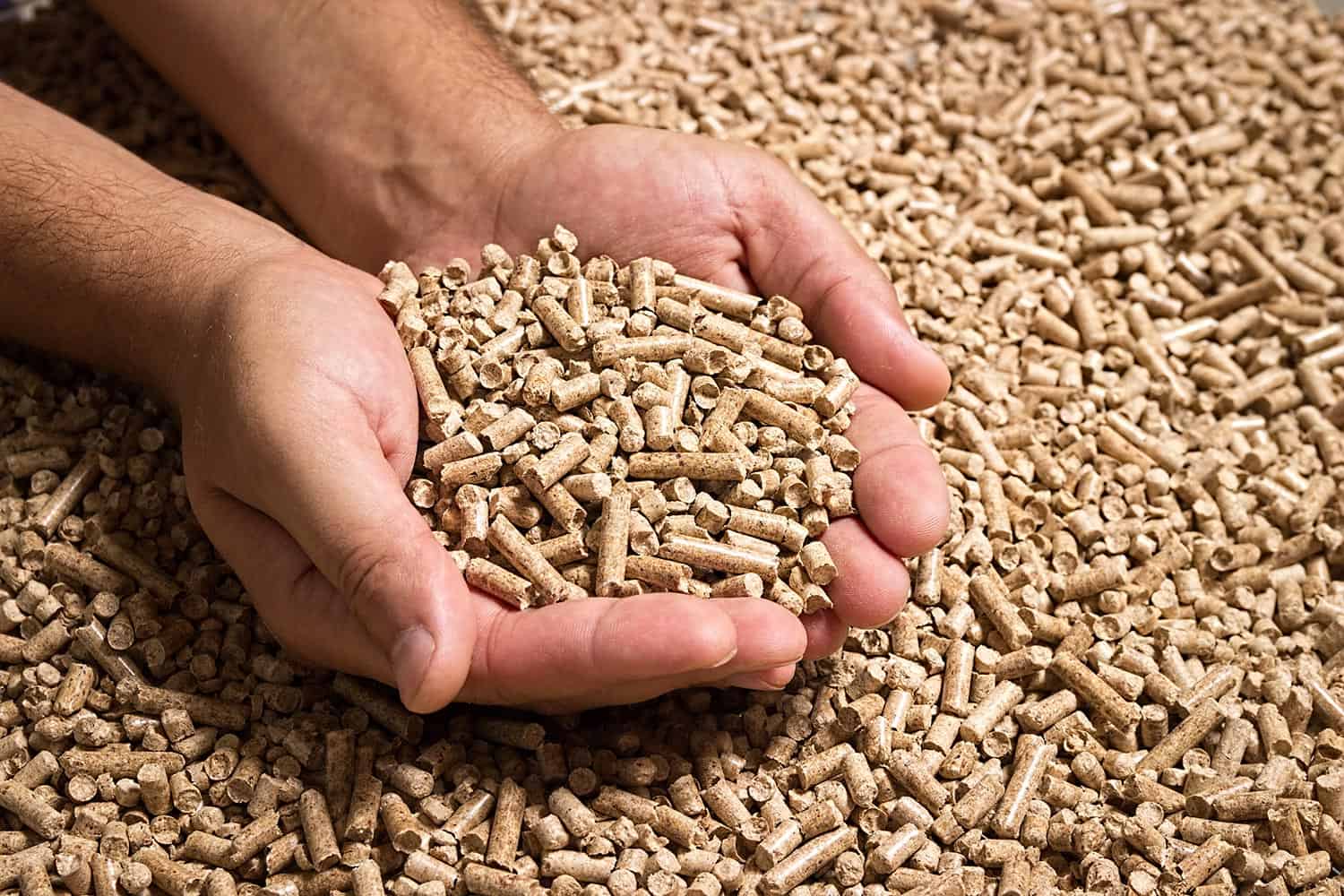
Pine pellets are not necessarily better or worse than other litter. But no matter what you use, anything other than pine pellets usually has an ammonia smell or an unhealthy and overwhelming perfume odor. So why suffer?
Most cats are perfectly happy with pine pellets. Several patents for cat and animal litter have proven that pine is the absolute best for odor control in pet urine. It's even popular in stables where ammonia build-up from urine can harm horses.
Some popular brands of pine litter are,
- Feline Pine
- Exquisicat
- Feline Fresh
- Nature's Logic
If you live near a farming community, you can even buy huge, 40-pound bags of pine pellet litter at pet suppliers and your local feed store.
You'll be amazed at the absence of urine odor when you switch to pine pellets!
How Does Pine Pellet Cat Litter Work?
Pine Pellet cat litter is ingenious! It works on a simple but effective principle. Compoundchem.com explains that enzymes in cat urine break down the amino acid in cat urine called 'felinine.' This produces that ammonia smell we all know and don't love.
The magic of pine pellets, according to felinepine.com, is that pine oil is anti-microbial and "bind directly to" and "lock away" that ammonia odor.
Are Pine Pellets Safe For Cats?
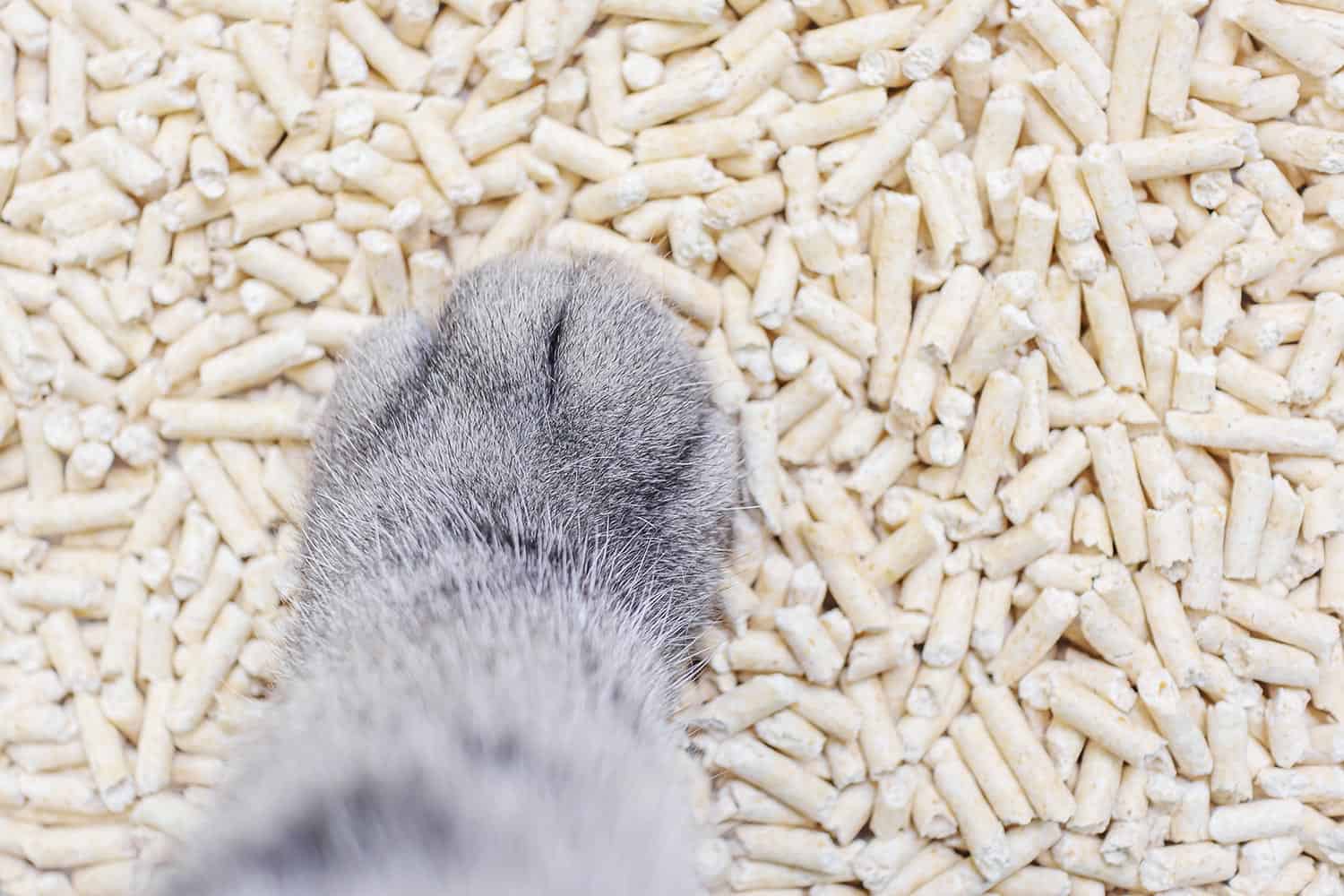
It's well documented that essential oils are toxic to cats. So does that mean that pine pellets are unsafe? Luckily, pine litter pellets are "kiln-dried." This process evaporates most of the toxic phenol found in pine wood. The remaining amount is so tiny that it's considered safe by vets.
Pine pellets are even recommended in the popular book "The New Natural Cat," co-written by a veterinarian. Millions of cats use pine pellets!
Tips and Tricks

To help your cat love the new box of pine pellet litter, remember that it can't be stressed enough that cats want a safe and clean place to use the toilet.
- Keep your litter box near the toilet for easy cleaning.
- Sprinkle a little catnip on fresh litter during the transition.
- Have multiple boxes in different locations.
- Provide different types of litter boxes: hoods, no hoods, screened off.
- Provide a quiet and private area for the litter box and keep it away from noisy kids or other pets.
Troubleshooting
If you are having trouble transitioning your cat to pine litter and find accidents in your closet or bed, remember that soiling outside the box is ALWAYS a litter box or medical problem. If you think switching to a different litter will solve an existing problem, be aware that it probably won't.
Some existing problems might hinder your switch to pine litter.
- Eliminate the possibility of a medical problem. Straining or multiple trips to the litter box, crying out, or abnormal behavior can signal health issues. When this happens, cats associate pain and fear with the litter box and try to find somewhere else.
- Be sure that other pets, even other cats, are not "guarding" the litter boxes. Provide your cat with several litter boxes in different areas.
- Cats are set in their habits and don't like changes in routine, so keep the rest of the cats routine the same during the transition.
SUMMARY
If you have patience, plenty of clean litter boxes, and provide a little catnip to tempt your cat, you'll be well on your way to using pine litter! You'll be so happy when you come home to a house that doesn't smell like an animal shelter!
For more information on litter box and pine litter, see 8 Types of Biodegradable Cat Litter (Including Pros and Cons)



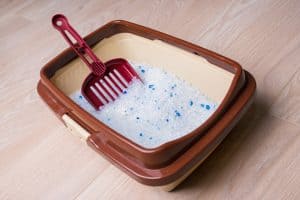
![cat examines kitty litter box with eco-friendly silicate litter - Can You Wash and Reuse Crystal Cat Litter? [Answered]](https://litter-boxes.com/wp-content/uploads/2023/08/cat-examines-kitty-litter-box-with-eco-friendly-silicate-litter-300x200.jpg)
